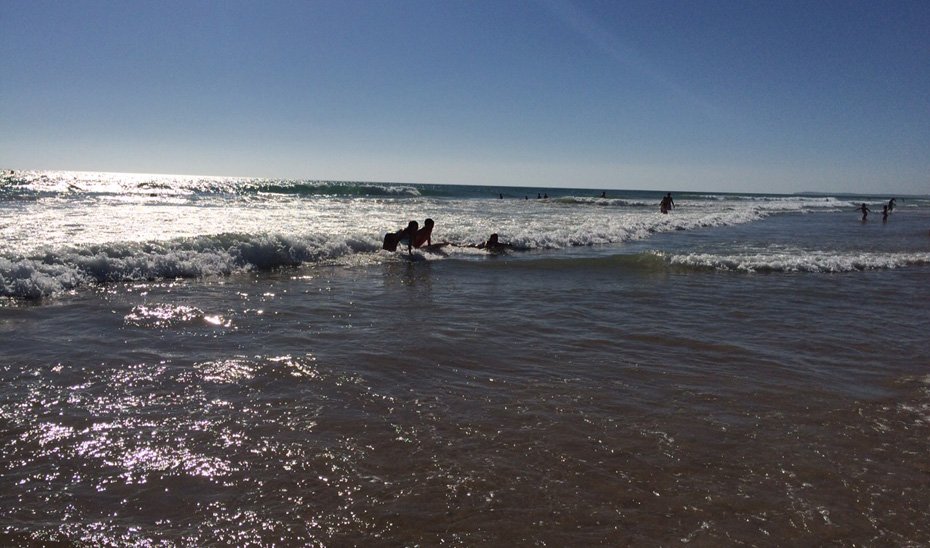All bathing waters on the Andalusian beaches are within the established quality levels, according to the report prepared by the Ministry of Health and Consumption during the first half of July 2025 on the state of the coastline in the summer bathing season, allowing for the lifting of the bathing ban at La Carchuna beach in the province of Granada, based on the analyses conducted by the General Directorate of Public Health and Pharmaceutical Regulation.
In the first half of July, the Ministry monitored 382 sampling points in the 303 bathing areas with regular seasons, of which 278 are coastal and 25 are inland waters, whose season began on July 1st.
The water samples have been analyzed to determine the different parameters required by current regulations, both microbiological and macroscopic, transparency, color, mineral oils, presence of persistent foams and floating solids, organic residues, and any other waste – glass, plastic, rubber, wood – that may affect the water quality and be of sanitary interest.
Regarding coastal beaches, by provinces, in Almería 95 samplings were carried out at the 91 designated points, distributed across 78 bathing areas in 14 Almerian municipalities. In Cádiz, a total of 79 samplings were conducted at the 79 designated points, spread across 58 bathing areas in 16 municipalities.
In Granada, 40 samplings were performed at the 38 designated points located in 30 bathing areas in ten municipalities. Between July 10th and 13th, bathing was prohibited at La Carchuna beach due to the alteration of microbiological parameters, but the ban has now been lifted after confirming that water quality has been restored in the latest analyses.
In Huelva, 52 samplings were conducted at 50 designated points, spread across 25 bathing areas in nine municipalities, and in Málaga, a total of 99 samples were taken at 99 designated points, distributed across 87 bathing areas in 14 municipalities.
In the case of inland bathing areas, samples were taken at the Cela de Lúcar reservoir in Almería. In Córdoba, the waters of the Breña II reservoir in Almodóvar del Río and the Colada Dam in El Viso, which opened for bathing on June 20th, were analyzed. In Cádiz, the waters of the Arcos de la Frontera, Bornos, and Arroyomolinos reservoirs in Zahara de la Sierra were analyzed.
In Granada, the waters of the Cubillas reservoir in Albolote, Bermejales in Arenas del Rey, Negratín reservoir in Cuevas del Campo, the Fuencaliente spring in the municipalities of Huéscar and Orce, and the Toba River in Los Guajares were analyzed.
In Jaén, samples were analyzed in the ten inland bathing areas: the Guadalquivir River in Villanueva del Arzobispo; Los Molinos stream and Guadalimar River in Siles, Borosa River in Santiago-Pontones, Guadalquivir River in Cazorla, Rumblar reservoir in Baños de la Encina, Jándula River and Encinarejo reservoir in Andújar, Aguascebas River in Villacarrillo, and Buenamar stream in Beas de Segura.
In Málaga, samplings were conducted at the two points located in the Conde de Guadalhorce reservoir in Ardales, as well as at the Hedionda spring in Casares. And in Sevilla, the waters of the Huéznar Riverside in San Nicolás del Puerto were analyzed.
This report on the sanitary quality of waters, indicating their suitability and, if necessary, providing recommendations or bathing bans, is issued every fifteen days throughout the summer season and will be available for public consultation through the Ministry of Health and Consumption website until the end of the bathing season on September 30th.
In accordance with current regulations, the bathing season in Andalusia begins on June 1st and ends on September 30th, although, depending on the location and characteristics of the area, the season may be shortened, with a total of 16 short-duration bathing areas (inland waters) currently existing.
Finally, the Ministry of Health and Consumption website has been updated with information on bathing areas, including a new territorial viewer alongside the traditional province-specific breakdown, providing information on the status of each beach based on their geographical location. This information can be found at:

